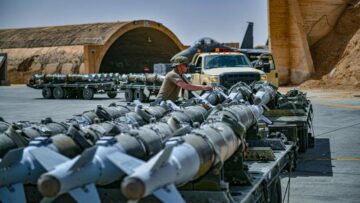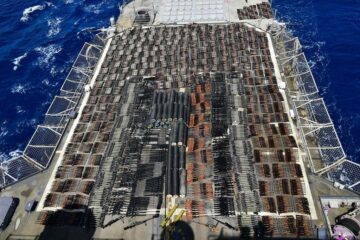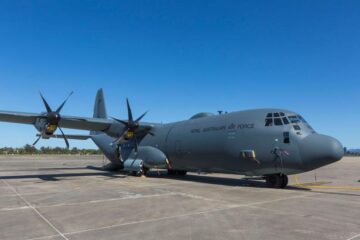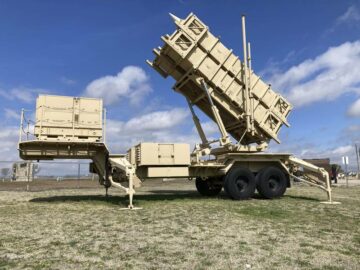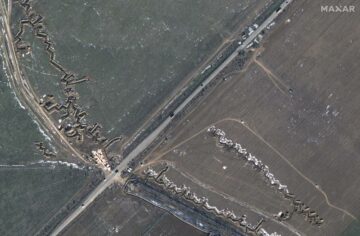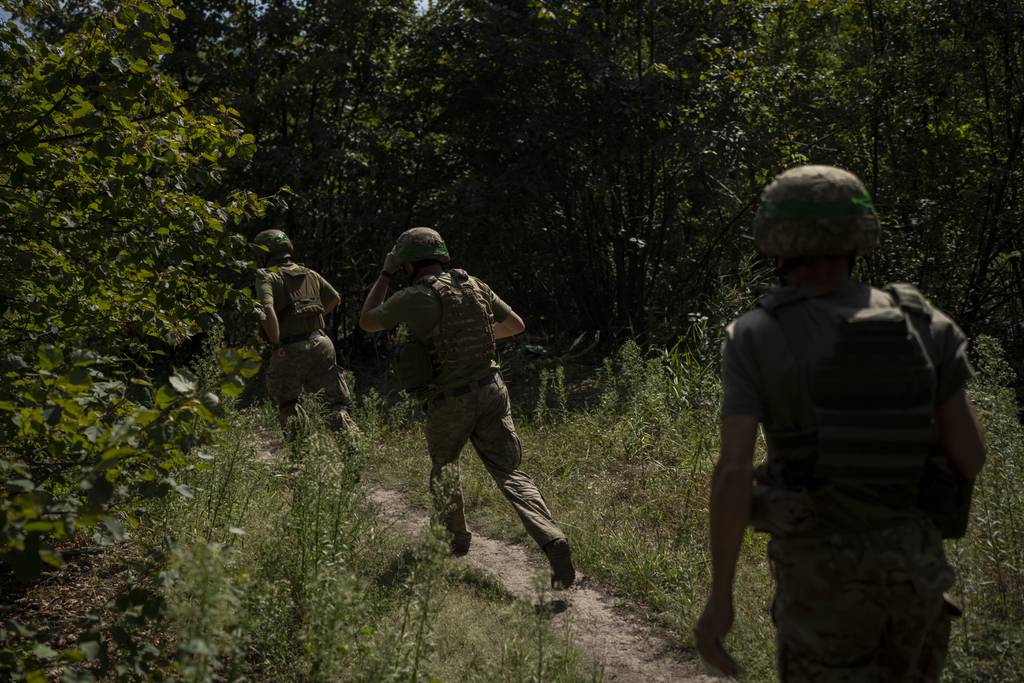
There are some who are criticizing Ukraine for taking so long to win, and others who are questioning whether they can win at all. The conflict appears to be mired in a stalemate — a battle of attrition along the lines of World War I that’s heavy on fires but low on maneuver. Given that many Ukrainians have been trained by NATO allies, why is this the case?
One answer is that we have not provided the Ukrainians with enough equipment to maneuver.
In order to fight this war, Ukraine must be able to shoot, move and communicate. Despite shortages in munitions, NATO has been providing Ukraine with the ability to shoot, even if evermore shells and rockets are needed given expenditure rates. Starlink has provided Ukraine with the ability to communicate. What’s missing is sufficient quantity of protected mobility, also known as combined arms maneuver.
The U.S. Army has such formations: armored divisions consisting of three to four maneuver brigades of tanks and infantry fighting vehicles, an artillery brigade, a support brigade for logistics, and another brigade of other enablers such as engineers, signal and air defense.
Producing and fielding this amount of equipment for Ukraine would take many years — time that the Ukrainians are paying for with the blood of their soldiers and civilians. And even if Congress appropriates the funding requested by the president, industrial base issues mean that it still wouldn’t get there in time. The solution then is to transfer this equipment from the U.S. Army today and then purchase new equipment for the Army over the next several years.
In more specific terms, the Army should transfer a division’s worth of equipment to Ukraine. This would not only assist Ukraine in breaking through Russian defensive lines, but it would also help modernize the U.S. Army, build industrial depth and increase the Army’s readiness in the near term by ensuring 100% manning in the service’s existing units.
A division’s worth of equipment isn’t some arbitrary number. It’s directly linked to the current size of the Army, which is struggling to maintain structure due to it being in the midst of one of its worst recruiting crises. The lack of soldiers in Army units is so bad that the service has to rightfully cut the structure of its special operations forces. But those cuts are just the beginning, as the Army’s active duty end strength has fallen by about 7% over the past few years, dropping from around 485,000 personnel in fiscal 2020 to around 452,000 today.
Transferring this equipment would help modernize the Army. Many of its weapons are decades old and must eventually be replaced with more modern versions of the Abrams tank and the Bradley fighting vehicle as well as the new Armored Multi-Purpose Vehicle. Because of the existing budget pressures on the Army, it wouldn’t be able to afford this needed modernization of equipment on its own. By transferring weapons and gear to Ukraine, the Army would receive more modern weapons in return.
Next, transferring this equipment would provide industrial depth, reinforcing a lesson that the Army and the rest of the services must learn from Ukraine: We may be unable to rearm ourselves during war. Sending these weapons as well as countless others through the steady drip of the Pentagon’s aid packages have forced the Army to rapidly increase its own ability to produce the tools of war.
Take, for instance, 155mm artillery shells. Without the war in Ukraine, there would have been little impetus for the Army to ramp up shell production from 14,000 shells per month within the last year to 28,000 shells per month today and to 57,000 shells per month by next spring — and even beyond that, to 100,000 artillery shells per month by 2025.
That’s an astounding increase, and transferring even more equipment to Ukraine would reinforce this lesson among Army leaders to expand production of other needed equipment.
Finally, the Army must cut the number of its units, or else it will become hollow — a phrase that came to being at the end of the 1970s and denotes an army that exists in name only. Possessing too much structure and not enough soldiers is the quickest way in which one gets to a hollow army. Therefore, divesting of a division’s worth of equipment today makes the Army more ready. When and if recruiting recovers, the new replacement equipment will begin to arrive.
In short, for the sake of the future of the Army and the future success of the Ukrainian counteroffensive, the Army should transfer a division’s worth of weapons and equipment to Ukraine. It would be a small price to pay in the long run to help the Ukrainians defeat one of our top adversaries and modernize the Army in the process.
Retired U.S. Army Maj. Gen. John Ferrari is a senior nonresident fellow at the American Enterprise Institute think tank. Ferrari previously served as a director of program analysis and evaluation for the Army.
- SEO Powered Content & PR Distribution. Get Amplified Today.
- PlatoData.Network Vertical Generative Ai. Empower Yourself. Access Here.
- PlatoAiStream. Web3 Intelligence. Knowledge Amplified. Access Here.
- PlatoESG. Carbon, CleanTech, Energy, Environment, Solar, Waste Management. Access Here.
- PlatoHealth. Biotech and Clinical Trials Intelligence. Access Here.
- Source: https://www.defensenews.com/opinion/2023/10/31/a-victory-in-ukraine-will-require-a-maneuver-division/
- :has
- :is
- :not
- $UP
- 000
- 100
- 2020
- 2025
- 28
- 70
- a
- ability
- Able
- About
- active
- afford
- Aid
- AIR
- All
- along
- also
- American
- among
- amount
- an
- analysis
- and
- Another
- answer
- appears
- ARE
- arms
- Army
- around
- AS
- assist
- astounding
- At
- attrition
- Bad
- base
- Battle
- BE
- because
- become
- been
- begin
- Beginning
- being
- Beyond
- blood
- Breaking
- budget
- build
- but
- by
- came
- CAN
- case
- civilians
- combined
- communicate
- conflict
- Congress
- Consisting
- countless
- Current
- Cut
- cuts
- decades
- Defense
- defensive
- denotes
- depth
- Despite
- directly
- Director
- Division
- Division’s
- Dropping
- due
- during
- else
- end
- Engineers
- enough
- ensuring
- Enterprise
- equipment
- evaluation
- Even
- eventually
- existing
- exists
- Expand
- Fallen
- fellow
- Ferrari
- few
- fight
- fighting
- fires
- Fiscal
- For
- forced
- four
- from
- future
- Gear
- Gen
- get
- given
- Have
- heavy
- help
- HTTPS
- i
- if
- images
- in
- Increase
- industrial
- instance
- Institute
- IT
- ITS
- John
- jpg
- just
- known
- Last
- Last Year
- leaders
- LEARN
- lesson
- lines
- linked
- little
- logistics
- Long
- Low
- maintain
- MAKES
- many
- May..
- mean
- missing
- mobility
- Modern
- modernization
- modernize
- Month
- more
- move
- much
- must
- name
- Near
- needed
- New
- next
- number
- of
- Old
- on
- ONE
- only
- Operations
- or
- order
- Other
- Others
- our
- ourselves
- over
- own
- packages
- past
- Pay
- paying
- per
- Personnel
- plato
- Plato Data Intelligence
- PlatoData
- president
- pressures
- previously
- price
- process
- produce
- Production
- Program
- protected
- provide
- provided
- providing
- purchase
- quantity
- quickest
- Ramp
- rapidly
- Readiness
- ready
- receive
- Recovers
- recruiting
- reinforce
- replaced
- replacement
- requested
- require
- REST
- return
- Reuters
- Run
- russian
- s
- sake
- sending
- senior
- served
- service
- Services
- several
- Shell
- Shoot
- Short
- should
- Signal
- Size
- small
- So
- solution
- some
- special
- specific
- spring
- steady
- Still
- strength
- structure
- Struggling
- success
- such
- sufficient
- support
- Take
- taking
- tank
- Tanks
- term
- terms
- that
- The
- The Future
- their
- then
- There.
- therefore
- These
- they
- Think
- think tank
- this
- those
- three
- Through
- time
- to
- today
- too
- tools
- top
- trained
- transfer
- Transferring
- u.s.
- Ukraine
- Ukrainians
- unable
- units
- vehicle
- Vehicles
- victory
- war
- War in Ukraine
- Way..
- we
- Weapons
- WELL
- when
- whether
- which
- WHO
- why
- will
- win
- with
- within
- without
- world
- Worst
- worth
- would
- year
- years
- zephyrnet


